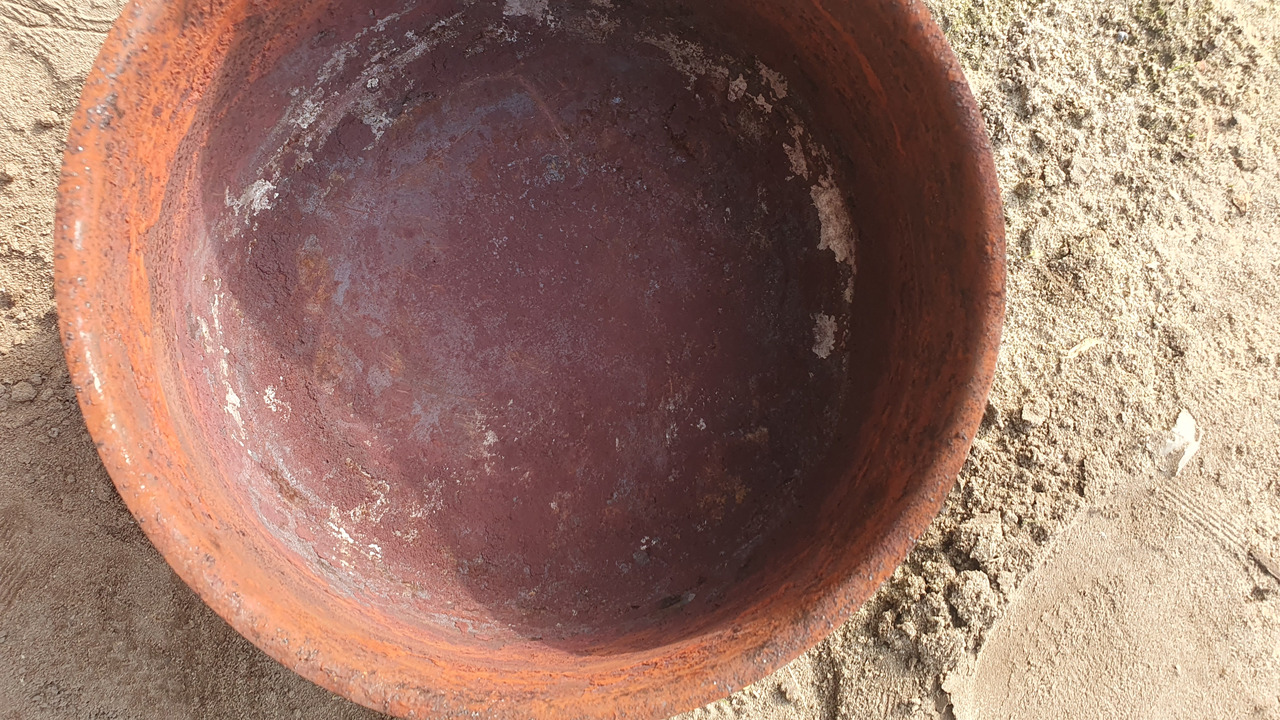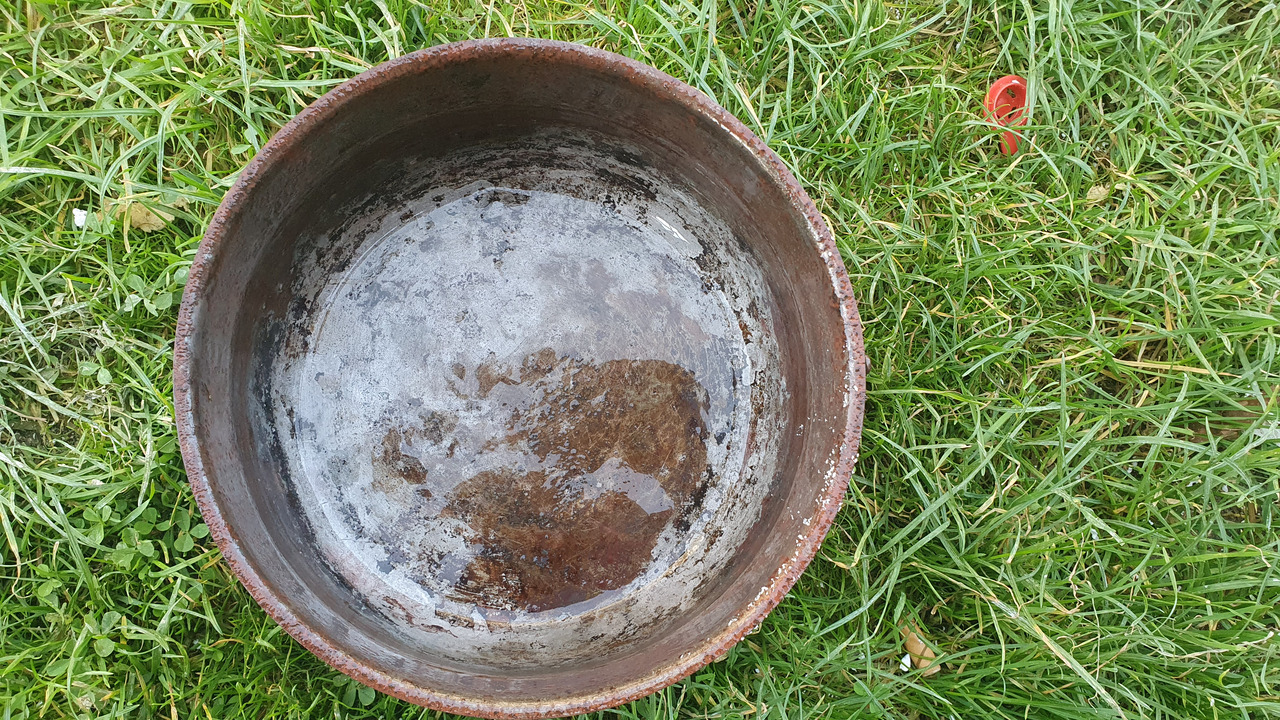Making iron oxide through electrolysis
You will need:
- bucket
- piece of iron
- small sheet of metal
- salt
- psu
- pot
- sieve and some kind of grinder (optional)
container
As a container i will use an old bucket already used to make iron oxide and as you can see it's coated in hard to remove iron hydroxides, i've tried to dissolve them in dilute phosphoric acid but it did little to nothing, probably a cloth and soap would clean it but i didn't bother.
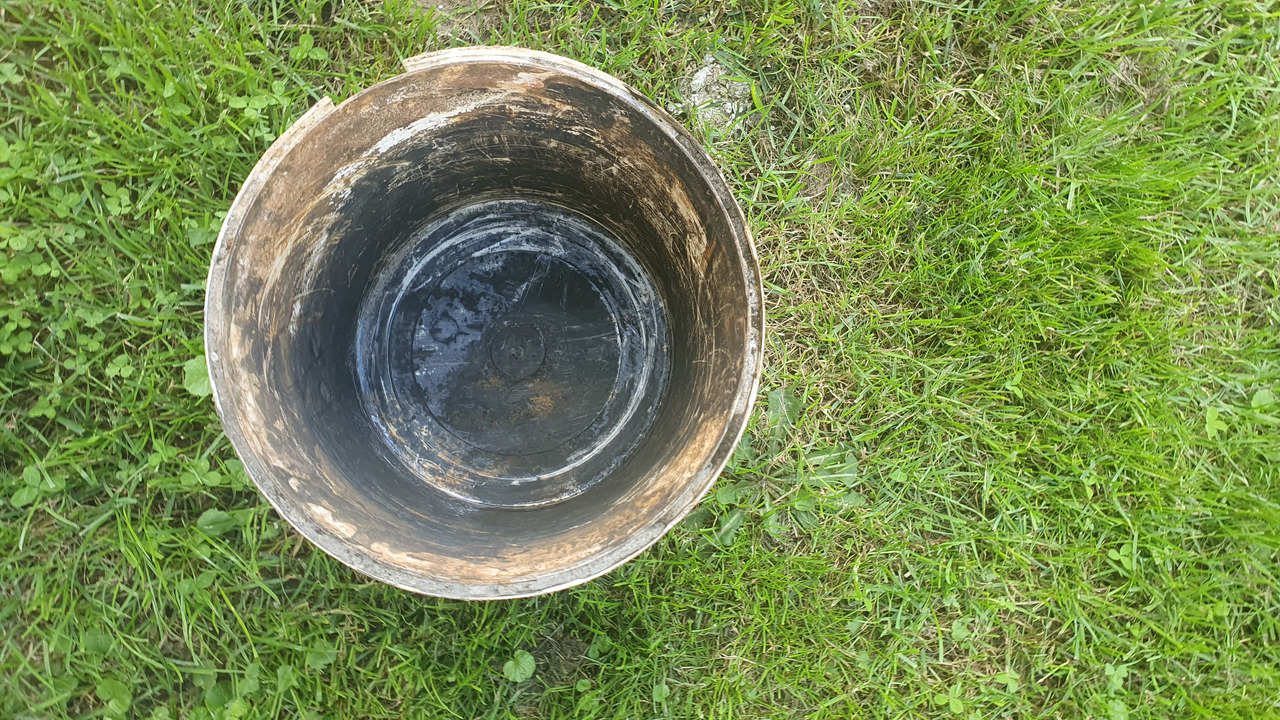
iron
Any large piece will do, but make sure it's not stainless steel as it will create many compounds making your final product impure and possibly hexavalent chromium which will make your water an environmental hazard. It also should have some point where an easy connection can be made, mine has circular ending which allows me to easily attach a welding clamp to it.
My piece weights 1679.1g
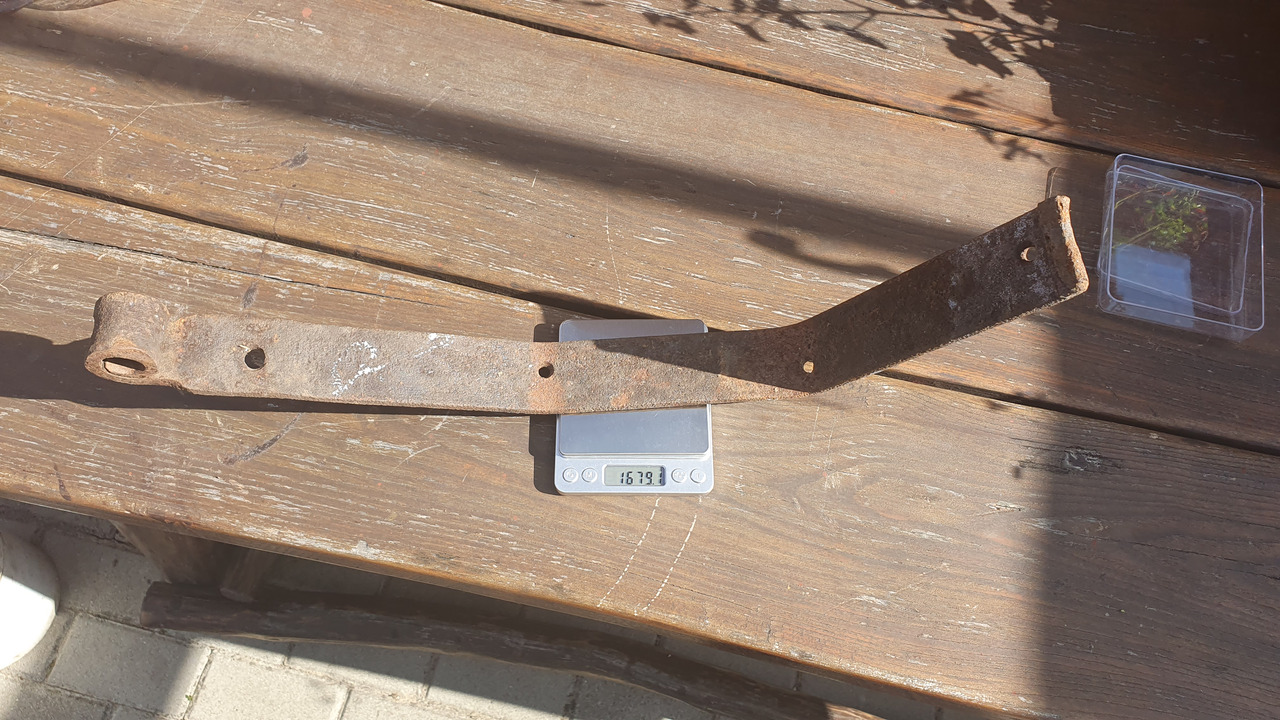
Making a connection to iron anode is exceedingly hard, you will need some clamp or crocodile clip and area of contact has to be polished, i did so with an angle grinder.
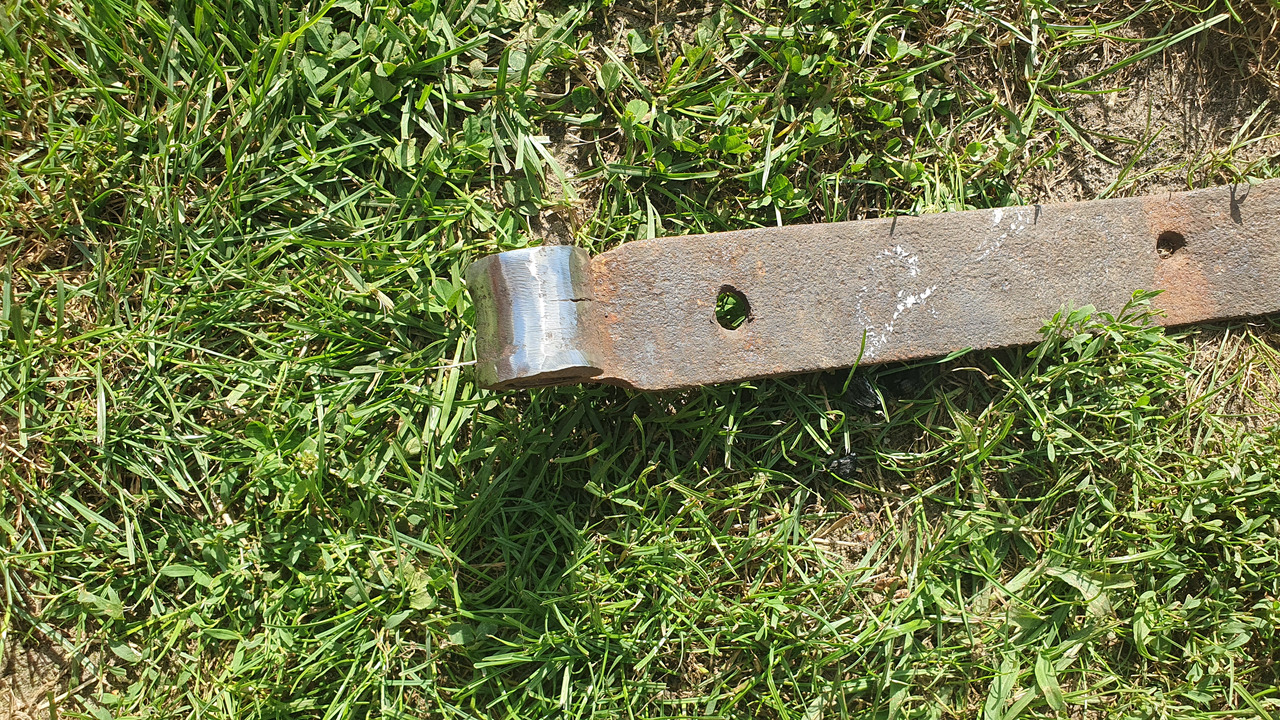
Bad connection will constantly break and overheat, and electrolysis of iron has very unpredictable currents that can jumps to couple dozens of amps making the connection red hot. This is also the reason why i don't recommend running these cells in series as the connections will constantly break driving you mad.
Make sure that connection is high above water level as if water gets on connection it will eat away your clamp and break the connection.
cathode
Can be any piece of metal, preferably with high surface area. I've used some sheet of metal connected with a crocodile clip.
electrolyte
I've used a 100g of sodium chloride. Using bases will just split the water and using acids will dissolve iron into salts, so only salts should be used.
psu
I use 5v LED psu capable of 60A. Using higher voltages is wasteful and causes cell to be hot.
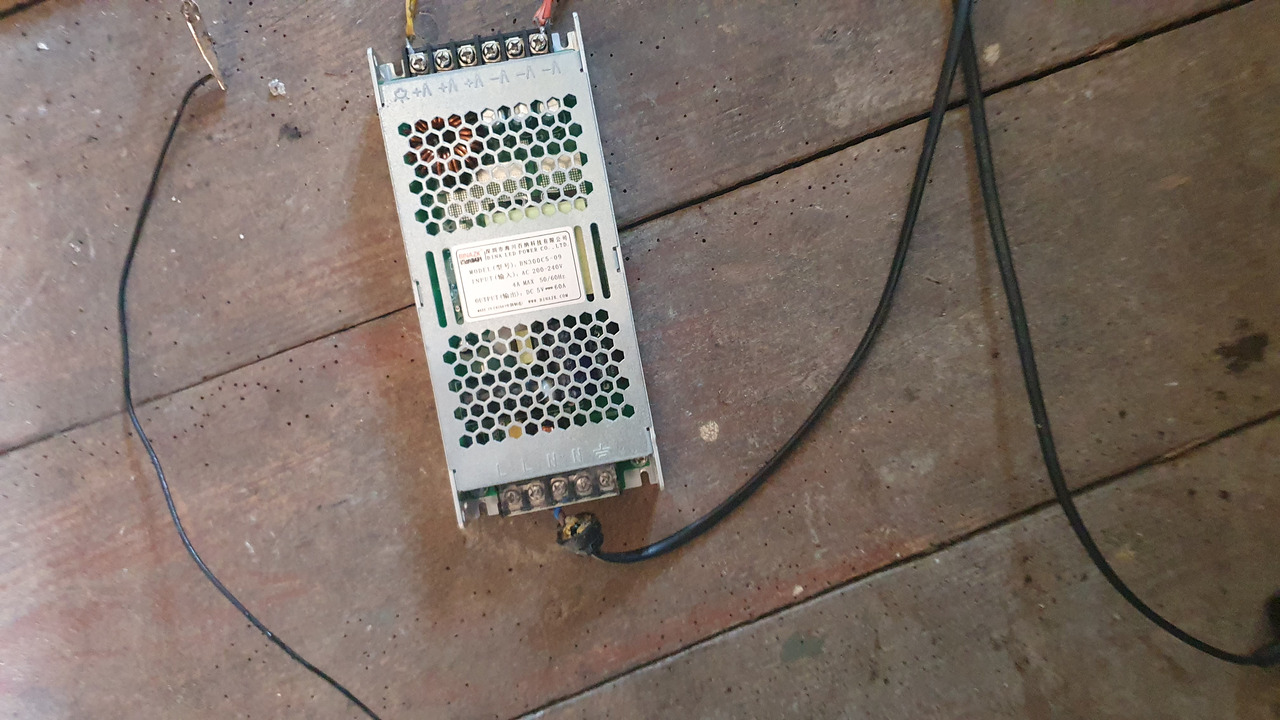
Using computer power supplies is a bad idea as only one voltage will be used. All power rails are coming from the same transformer so high disproportions of current draw on windings will destroy it. Even artificially loading other rails doesn't make them viable because iron hydroxides conduct electricity so when the cathode stands still a connection is made. Cells with current draw of 6A can jump to 30A.
I've killed a lot of computer power supplies, sometimes just by running the cell for one hour with current far below rated. Cause of their death was always shorted diodes on the secondary. It is an easy repair but after around 4 of such deaths the standby voltage drops to 2.5v and startup circuit fails. Additionally artificially loading other rails will make their diodes shorted too even if they are loaded slightly.
LED power supplies are cheaper and more powerful, my 5v one even has passive cooling.
You should be careful about where you place the psu as the cell generates a lot of salt vapour that condenses on everything. This is a reason why you shouldn't do it in your house as the fumes are very unpleasant to breathe in, although it doesn't have smell to it. psu with active cooling should be in another room at best, psu with passive cooling still has to be hidden somewhere. The layer of salt formed does not damage it immediately but will if it comes in contact with water.
If your psu gets coated in salt you should disassemble it and wash it in water. Surprisingly the salt is not very water soluble and doesn't taste very salty (maybe calcium from water?) sometimes i have to use a brush to clean it. After washing, it should be dried with hair drier so it doesn't get corroded and no water is left. Be careful to not overheat the electrolytic capacitors as at 130C they might pop, its better to do it 2 times then to overheat it.
running the cell
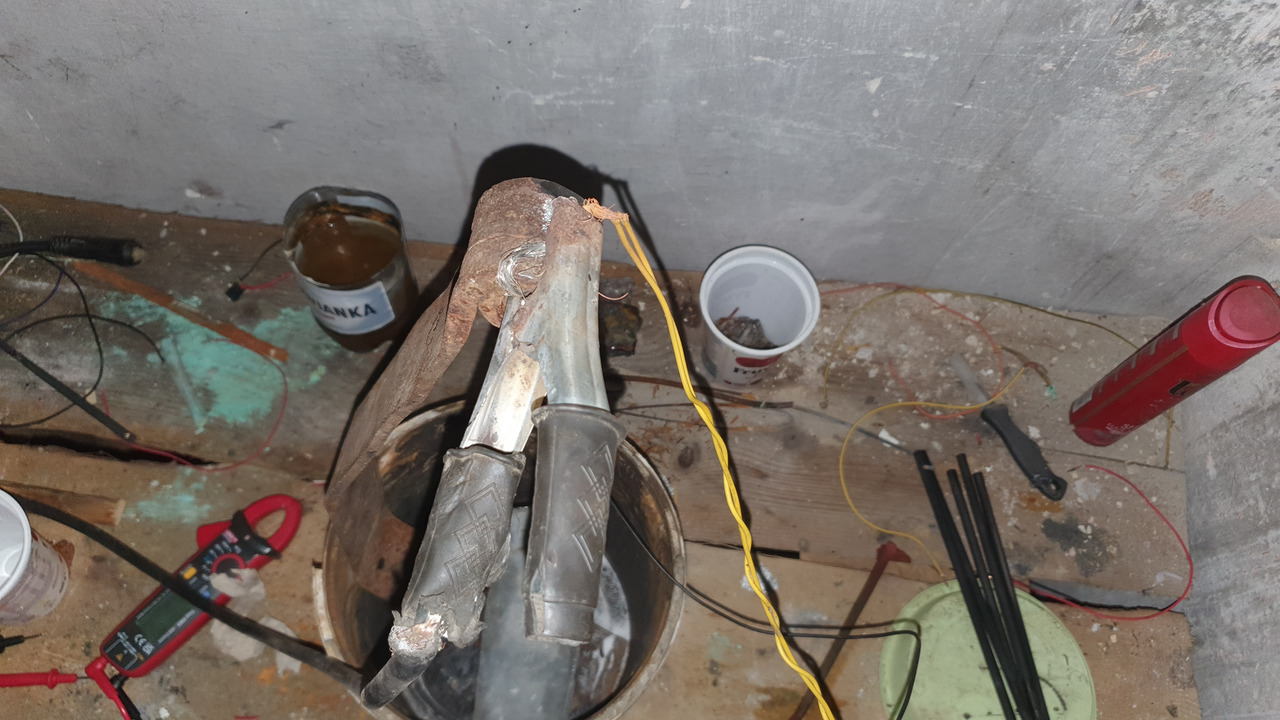
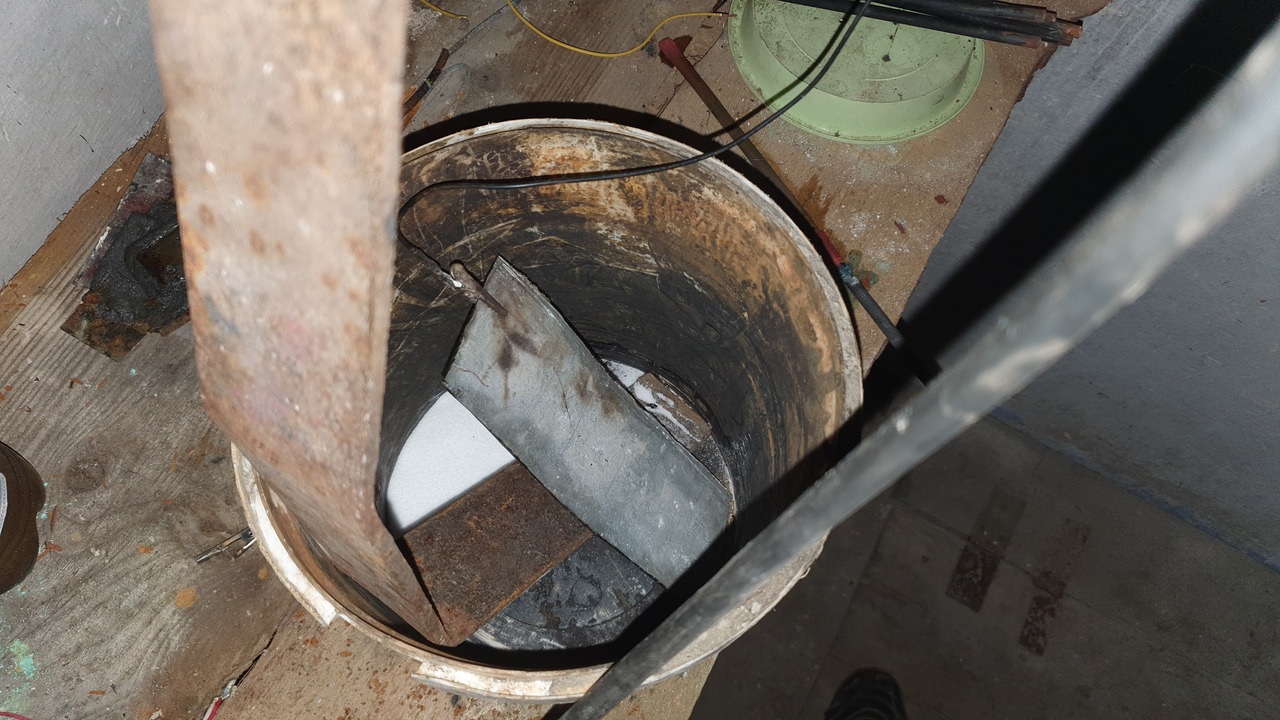
The cell run started at 1.3A and quickly rose to 4.5A. The current constantly shifts depending if the cathode is moved. Iron in these conditions is so bad at making connection i didn't succeed at purposely shorting the electrodes in solution, so to increase the current i've laid cathode on anode. This increased the current to 6A. These currents are pretty low and if you want you can double the amount of salt in the solution as you can recover most of it later.
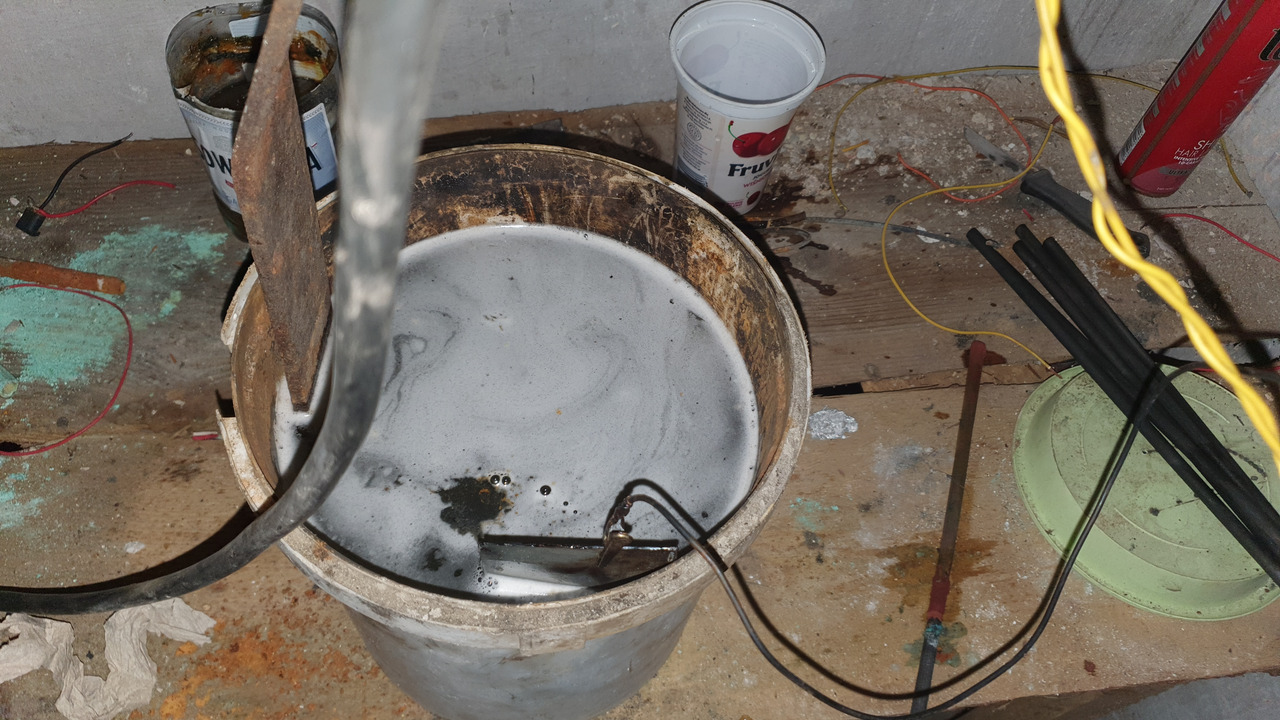
Having the current you can calculate the amount of time to completion
t = m * ((1 / M(Fe)) * 2F) / I
m - mass of iron
F - Faraday constant
I - current
M(Fe) - molar mass of iron
Cell produces iron (II) hydroxide so 2 moles of electrons are needed to convert 1 mole of iron that's why 2F is used.
t = m * ((1 / 55.85) * 192970) / I
t = m * 3455.14 / I
1679.1 * 3455.14 / 6 = 966920s = 268hours = 11.19days
Well the above would be correct if not for constant current change. The iron hydroxide that comes in contact with both electrodes starts to develop conducting channels. This made my cell draw 20A. This current is a waste as it's just resistive load it does not produce anything. To prevent that you should keep electrodes reasonably far apart and move cathode a couple times a day.
As the cell heated up the current rose to 5.5A.
After some time i've noticed that there was some soap left after my failed attempts at cleaning the bucket. And now i'll mention that you should keep all fire sources away from the cell (especially when you have soap in it) and keep it in ventilated area (i have leaky roof and it's actually enough) otherwise you can have a nice hydrogen explosion.
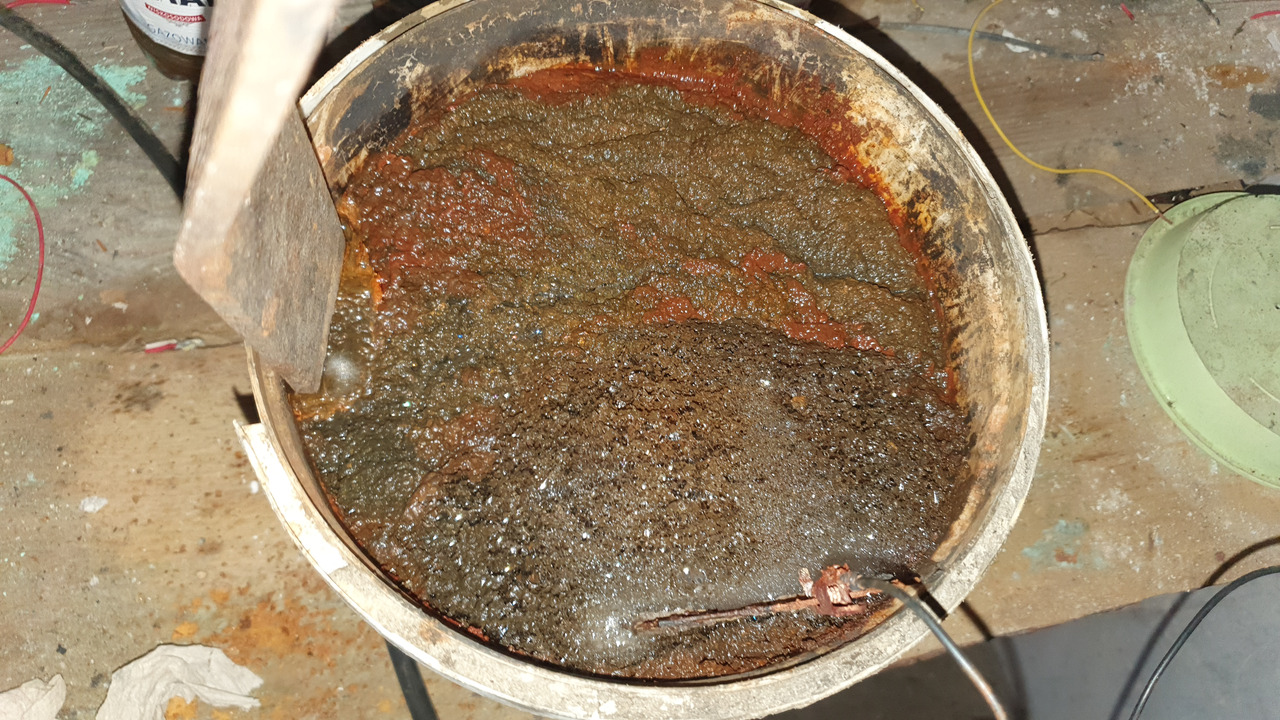
Cell started at 2024-07-29 14:00 and cell was turned off from 2024-08-01 to 2024-08-06 16:00
2024-08-07 anode connection rusted and had to be polished again, cathode cable broke probably due to heat.
On 2024-08-26 17:28 i've finished the run so the cell run for 23 days. The total energy consumed by the cell was 11.3 kWh.
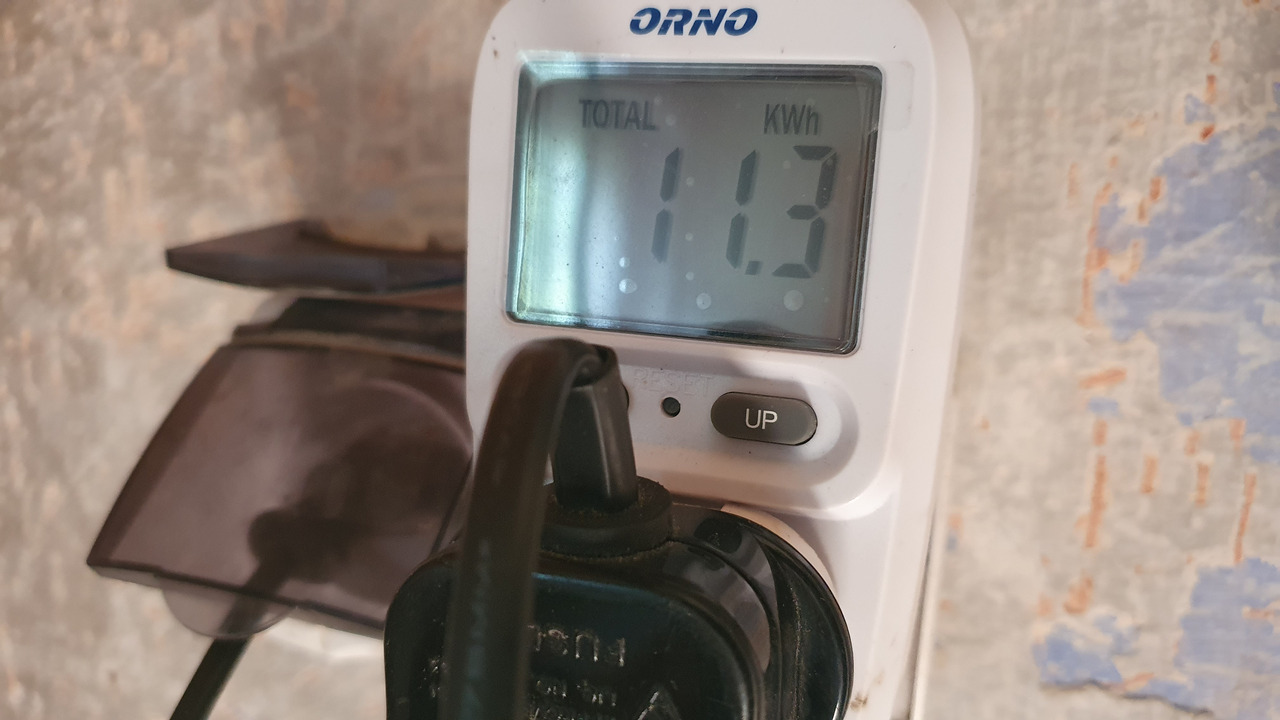
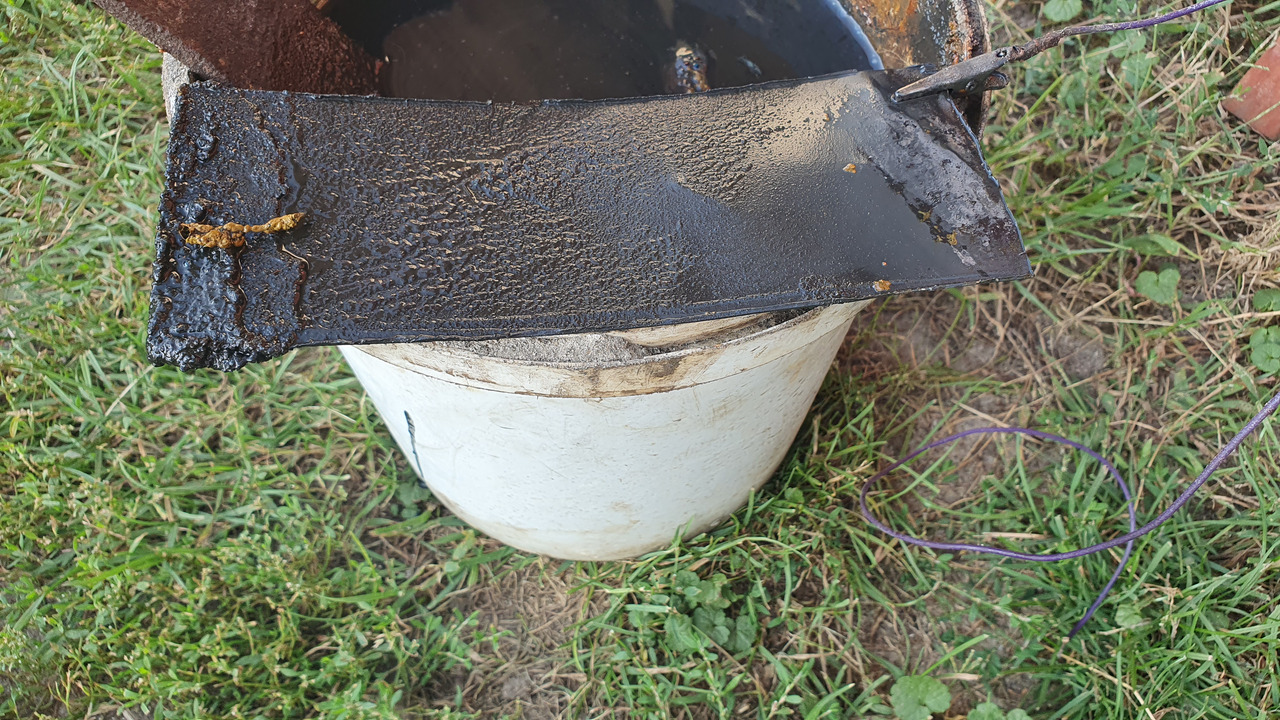
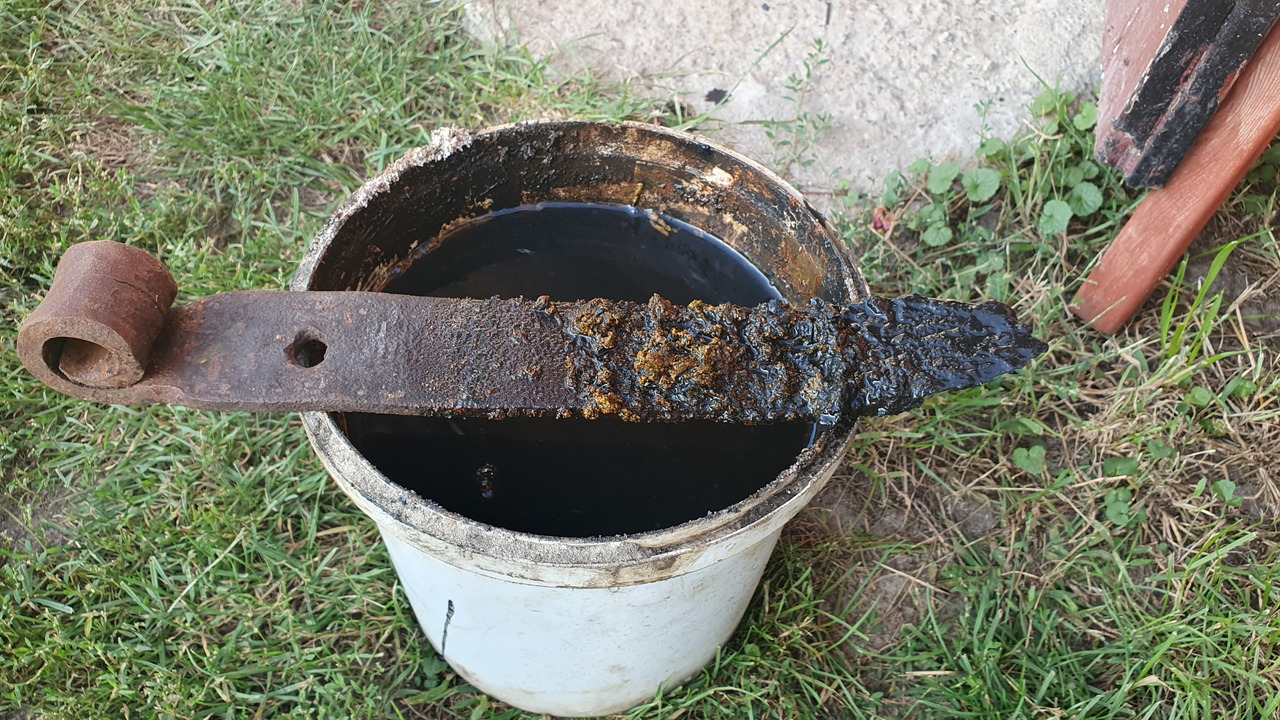
efficiency
Anode weighted 852g, so 1679.1 - 852 = 827.1g of iron consumed.
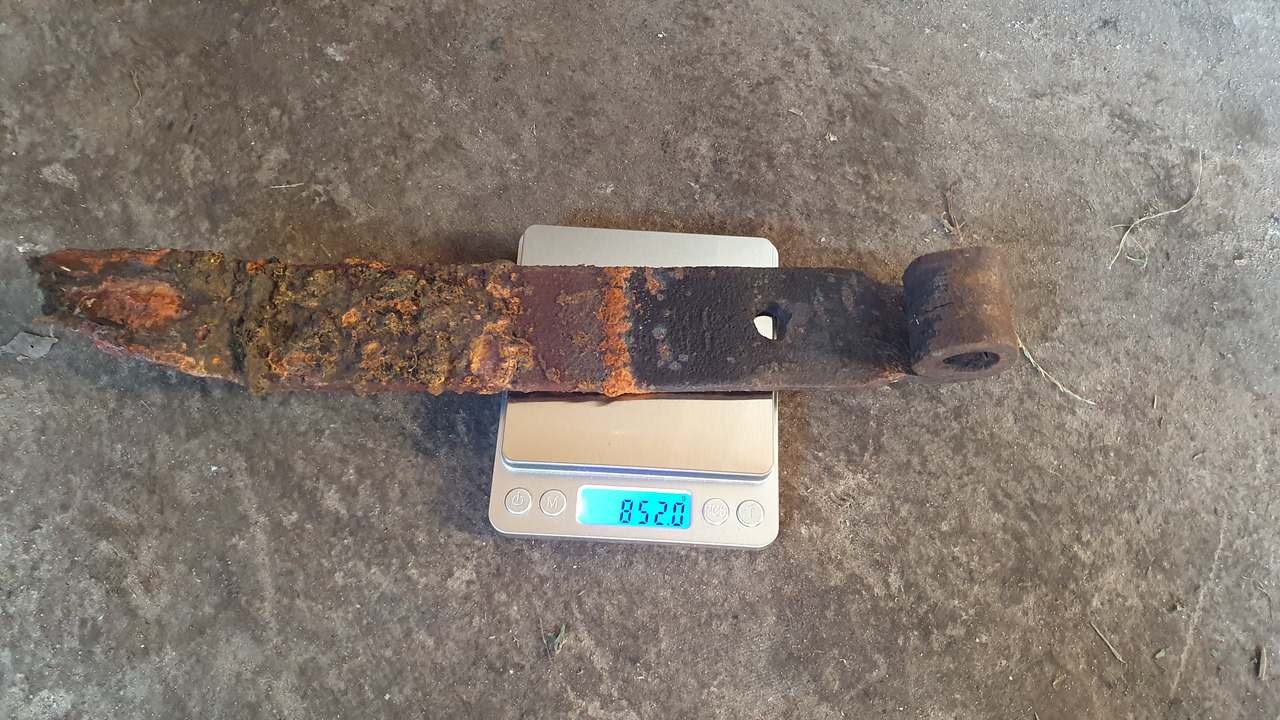
(827.1 / 55.85) * 2 * 96485 = 2857752J
11.3 * 3600 * 1000 = 40680000J
2857752 / 40680000J = laughable 7.02% efficiency
((3600 * 1000) / (2 * 96485)) * 55.85 = 1041.9g - even 1kWh theoretically converts more iron than my 11.3kWh did.
In conclusion high container should be used and anode should be suspended in solution so that hydroxide sludge doesn't touch it or you will lose a lot of electricity and time.
pulverizing
Sludge was washed 5 times with water
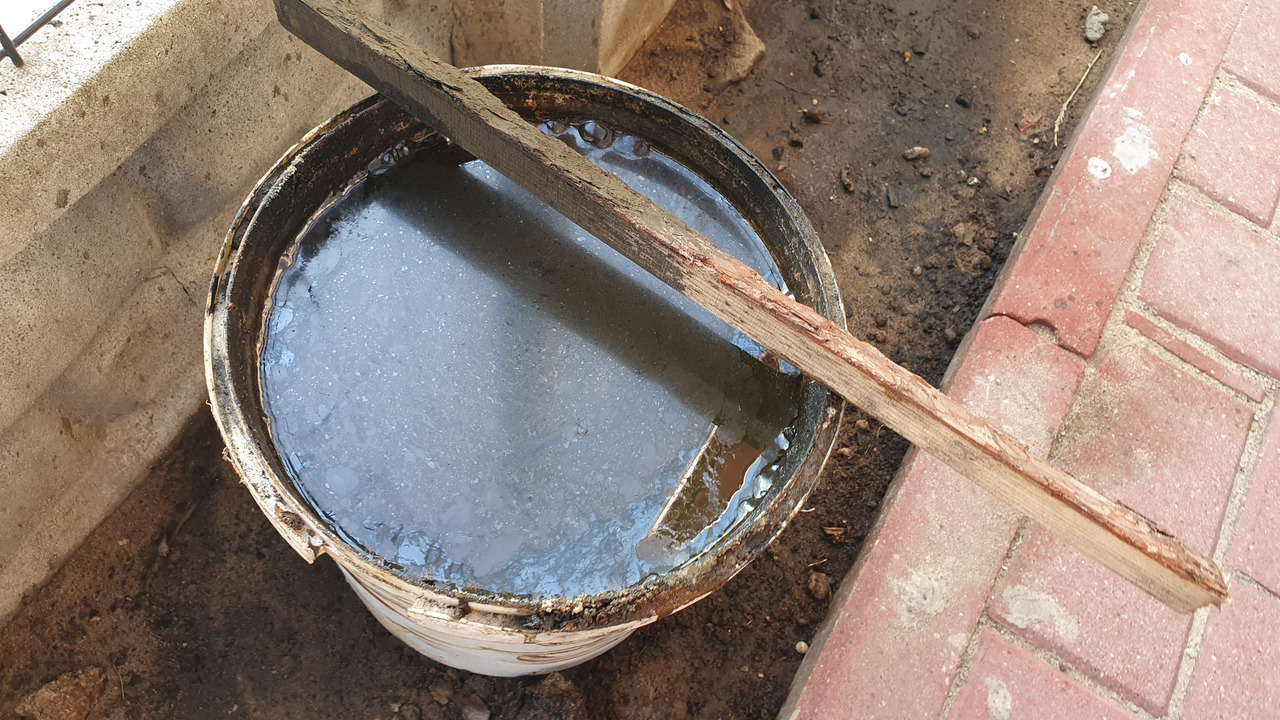
After decanting, it was transferred to pot to boil of water and it was splashing a lot
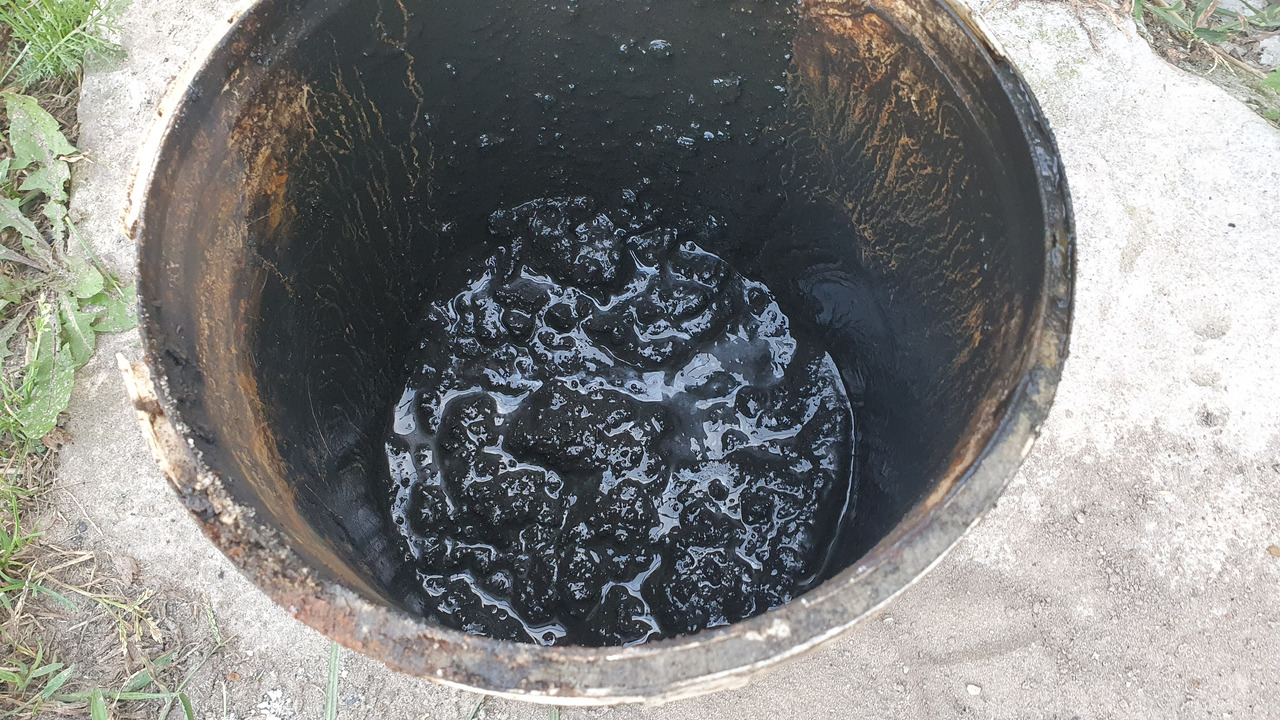
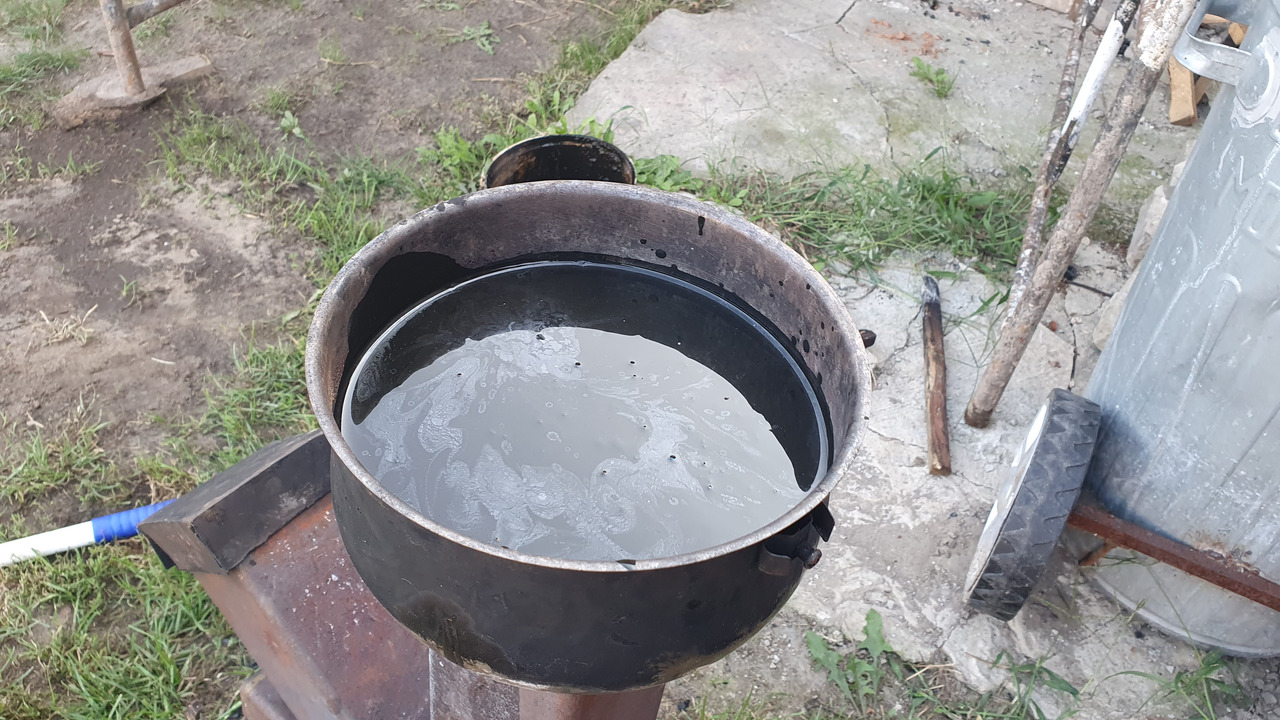
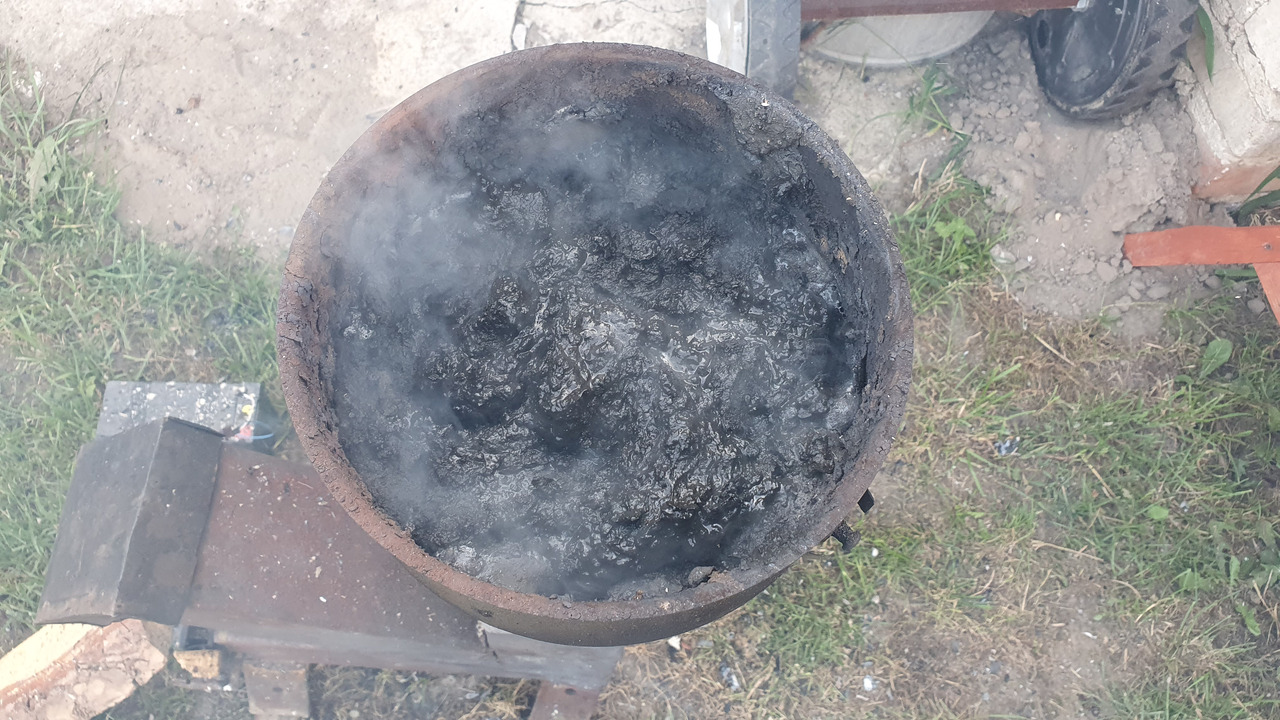
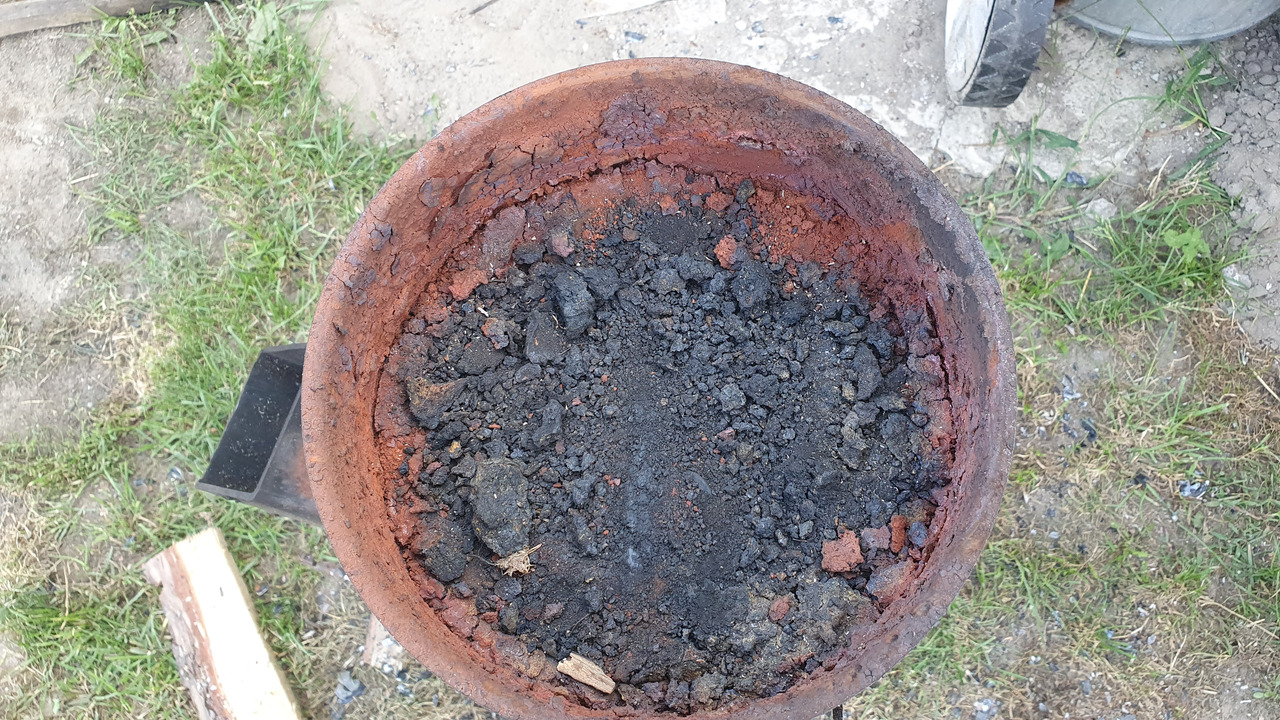
While drying iron hydroxides are converted into oxides. It's important to constantly stir it so it doesn't clump into unbreakable mass.
Black iron II oxide powder
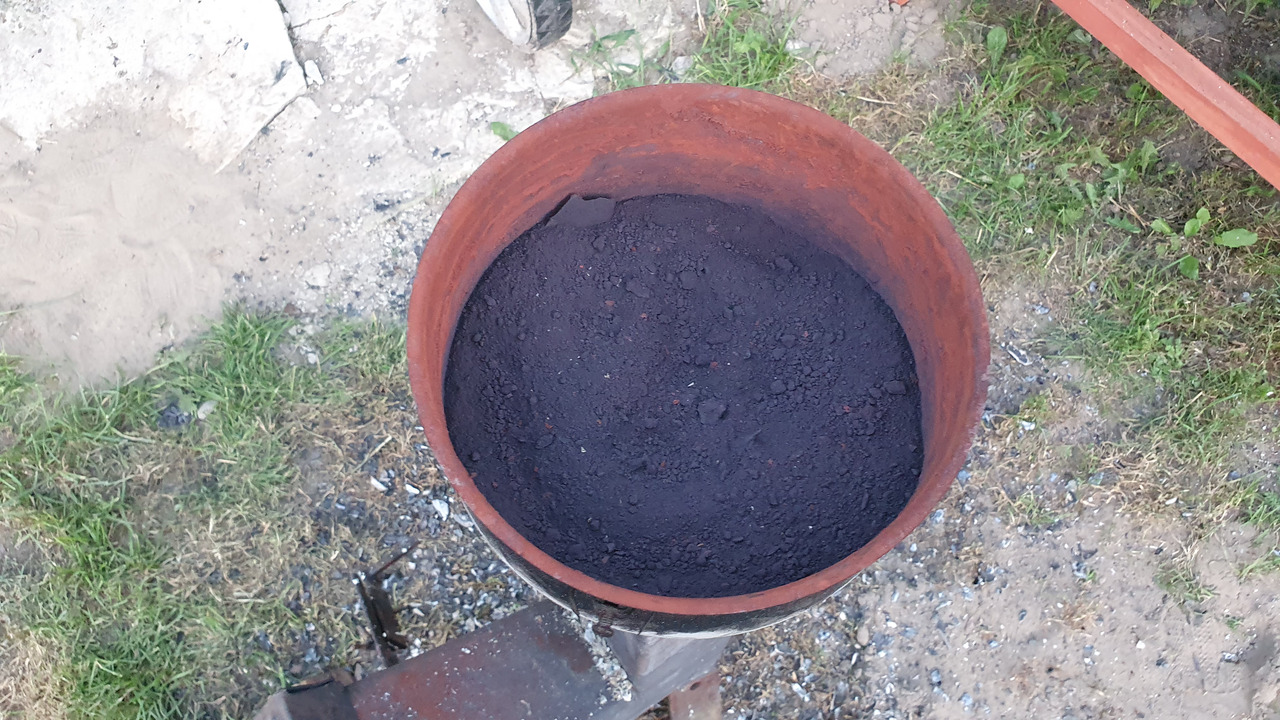
When heated the top of it is oxidized by air to red iron III oxide
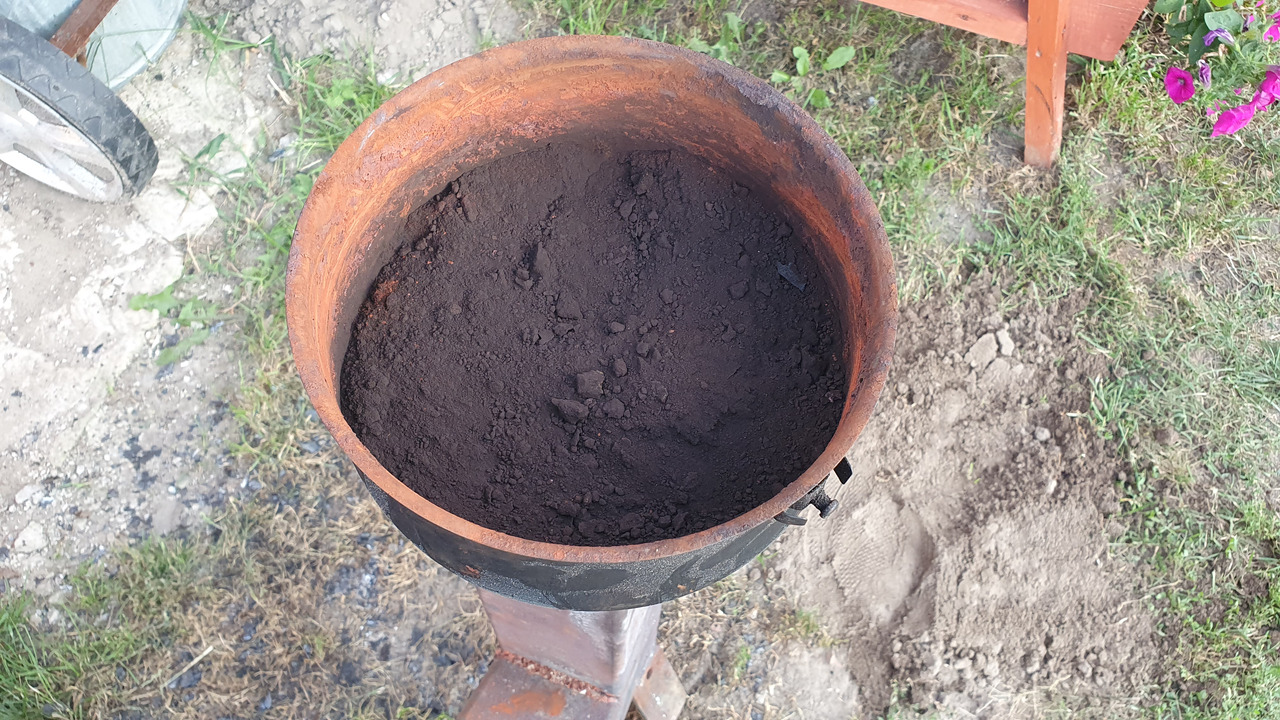
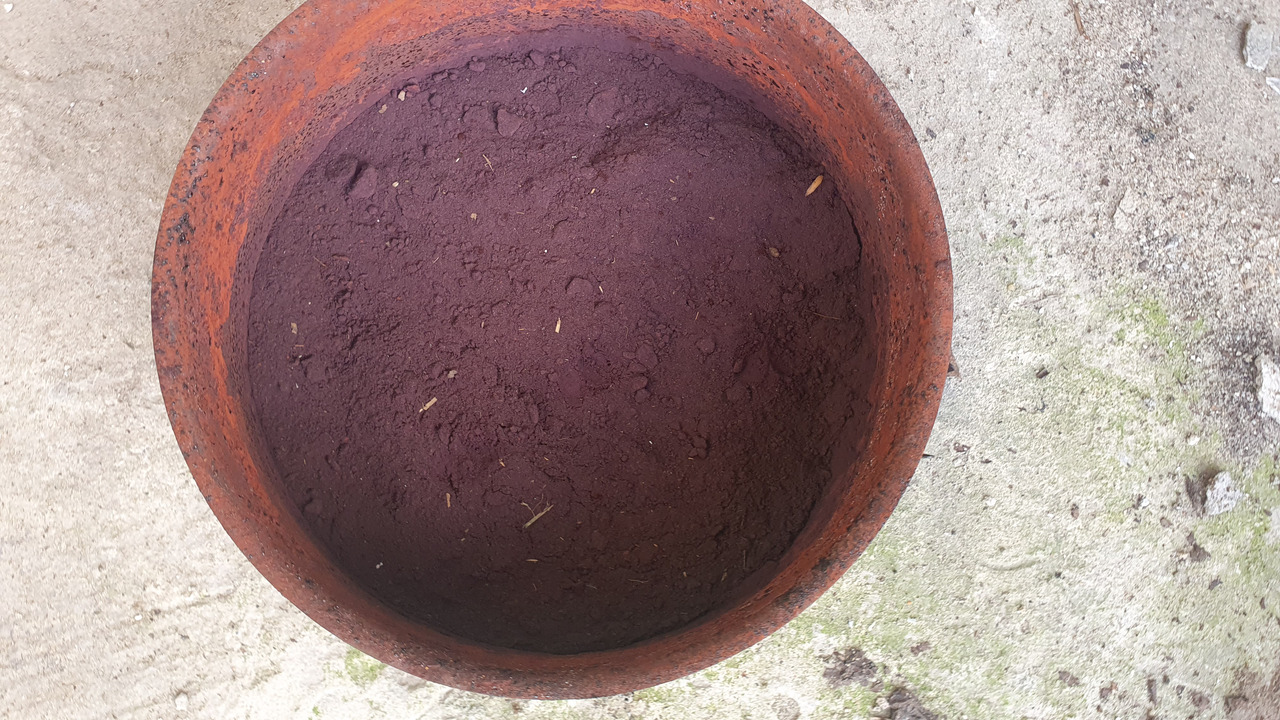
After a couple of hours of periodical stirring most of it will oxidize, but i didn't have patience for it as temperature has to be high and maintaining my furnace requires a lot of attention since it burns wood quickly.
Powder was sieved
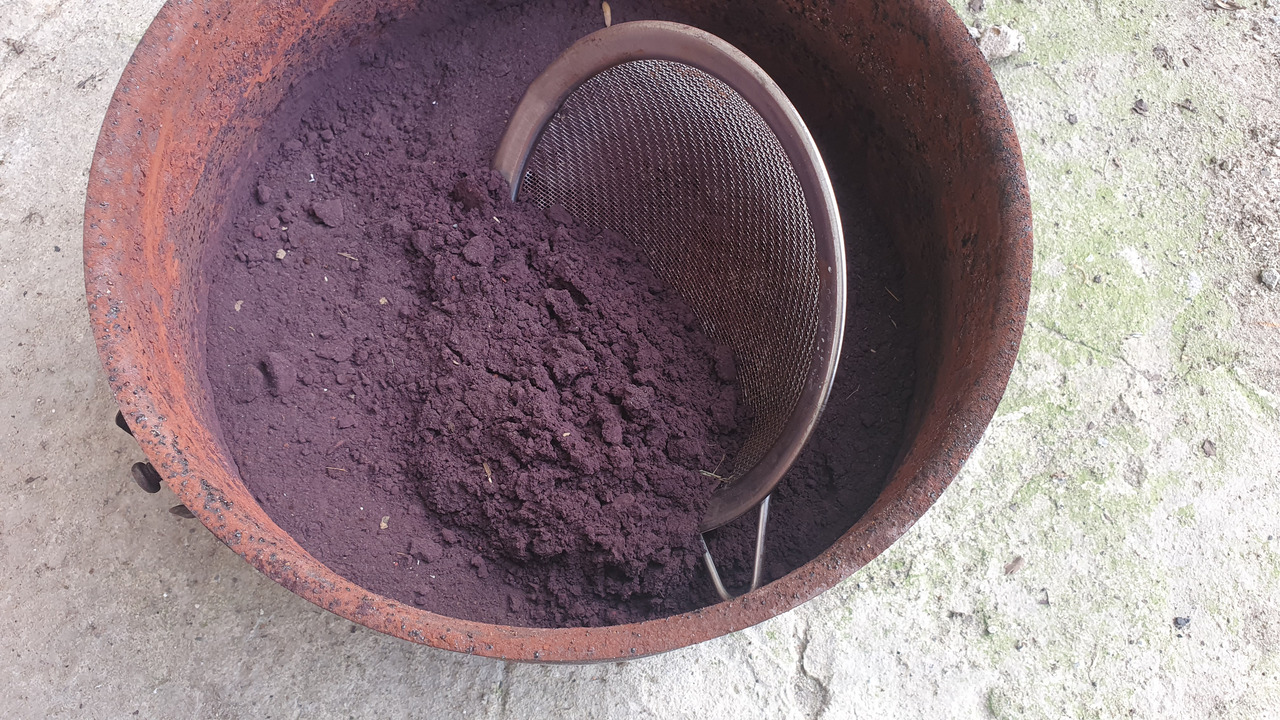
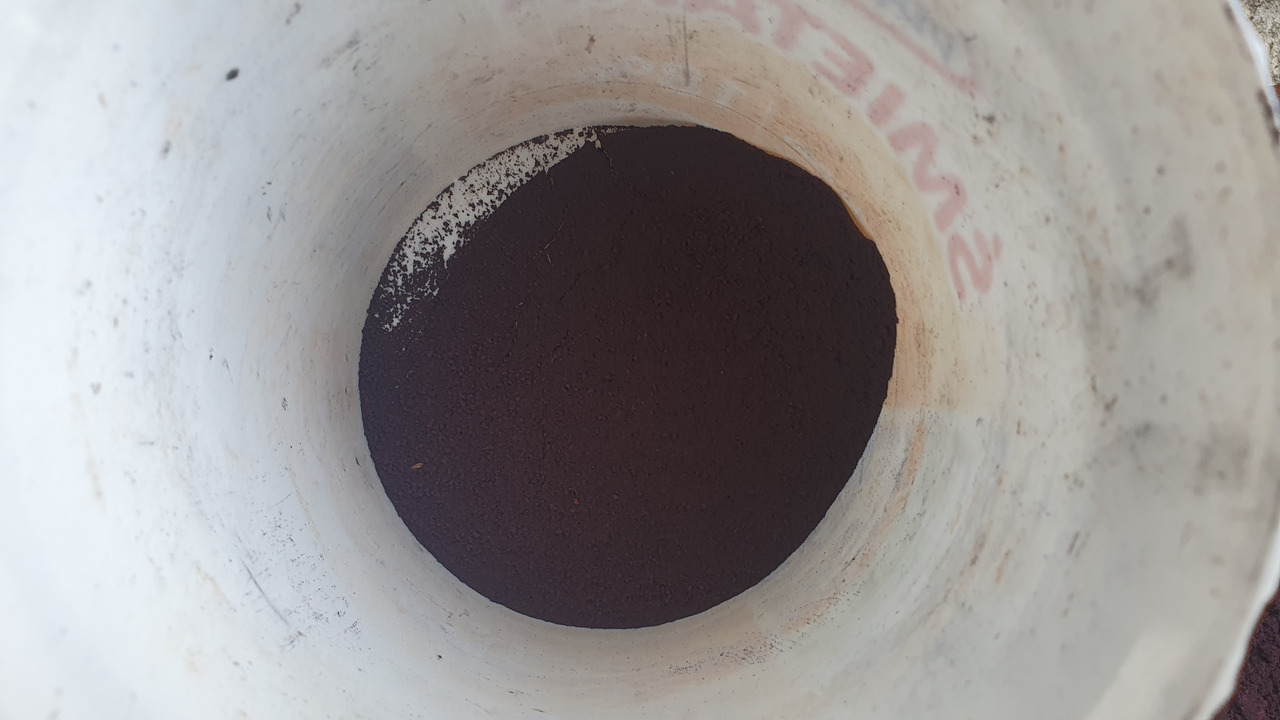
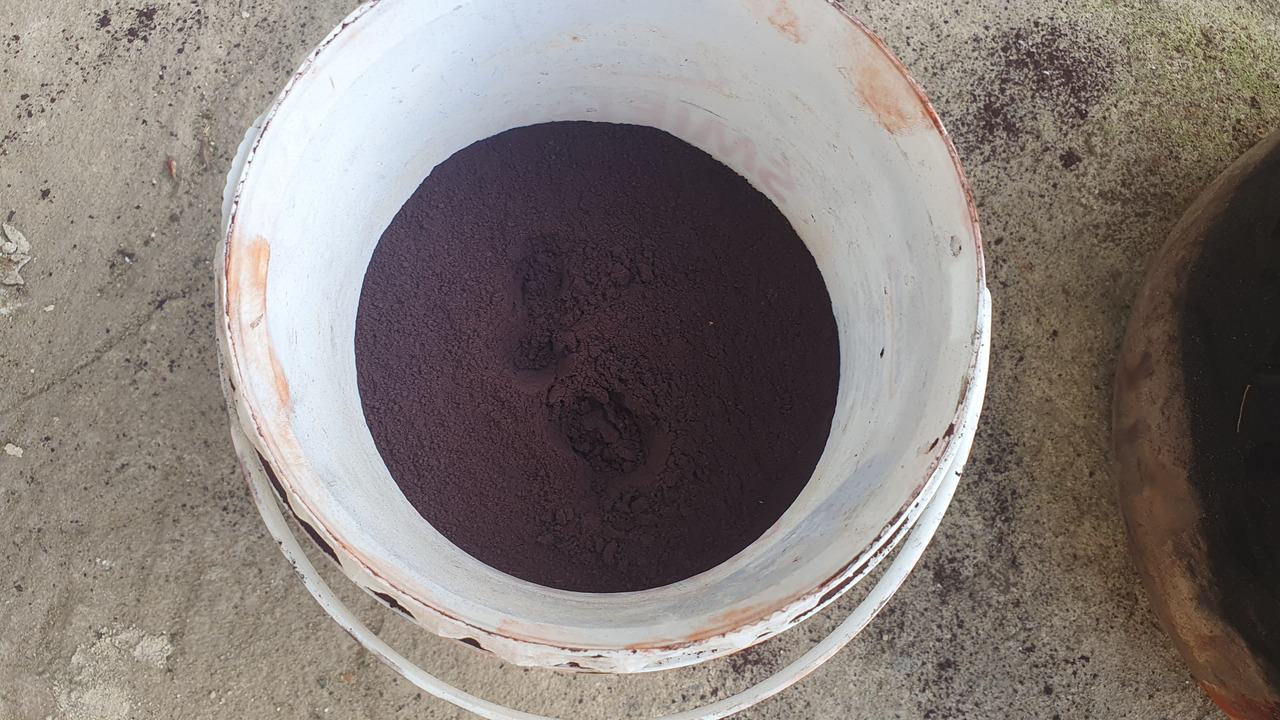
Chunks were put into my mortar
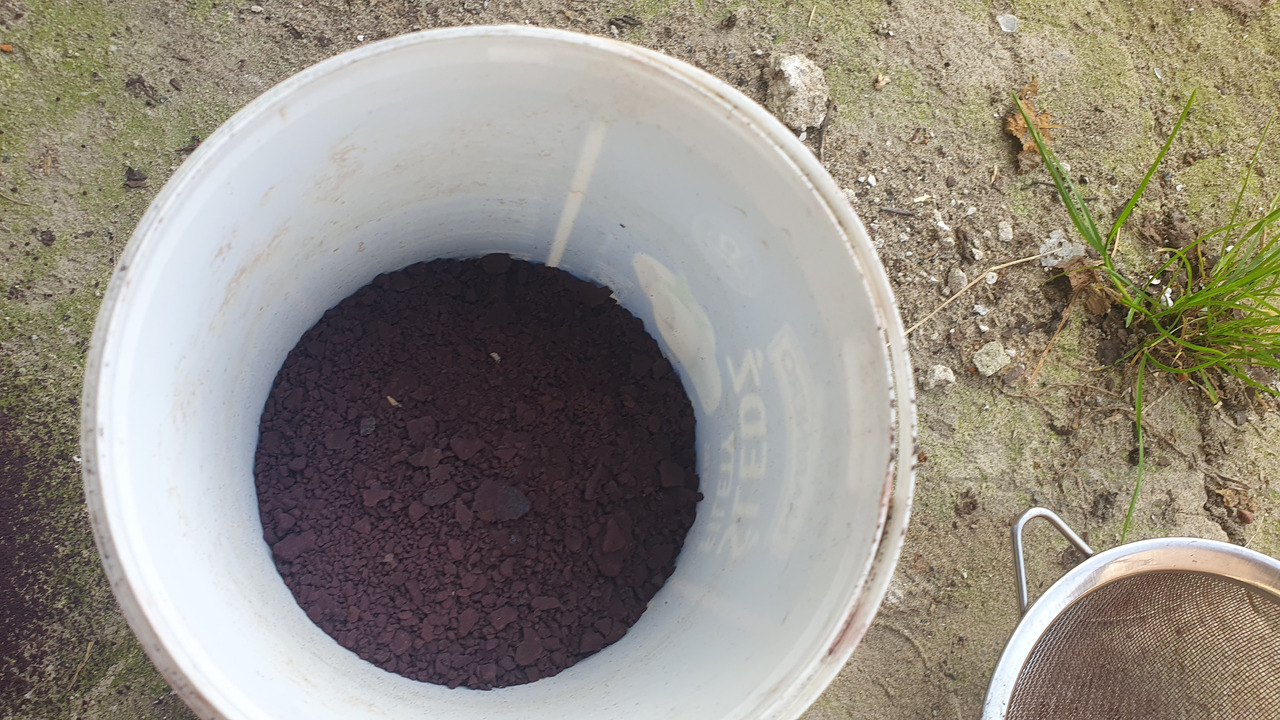
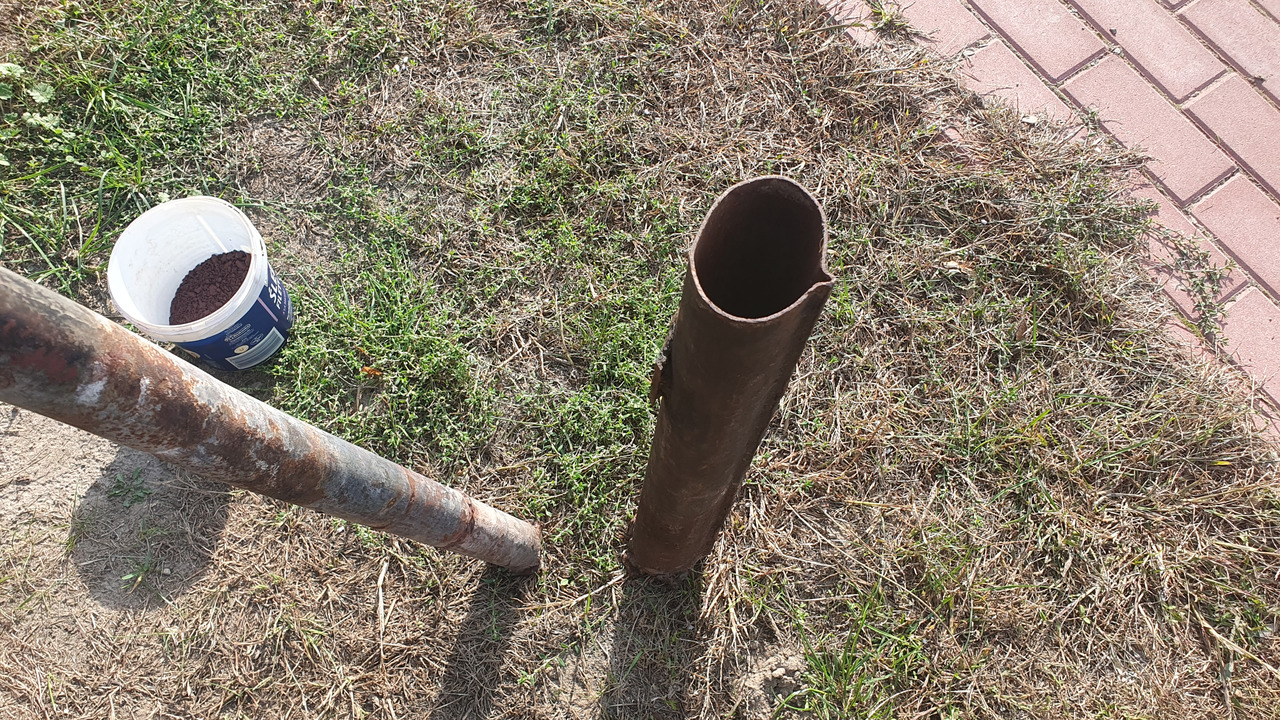
And this repeated 2 times until everything passed through.
Final product weighted 1007.7g
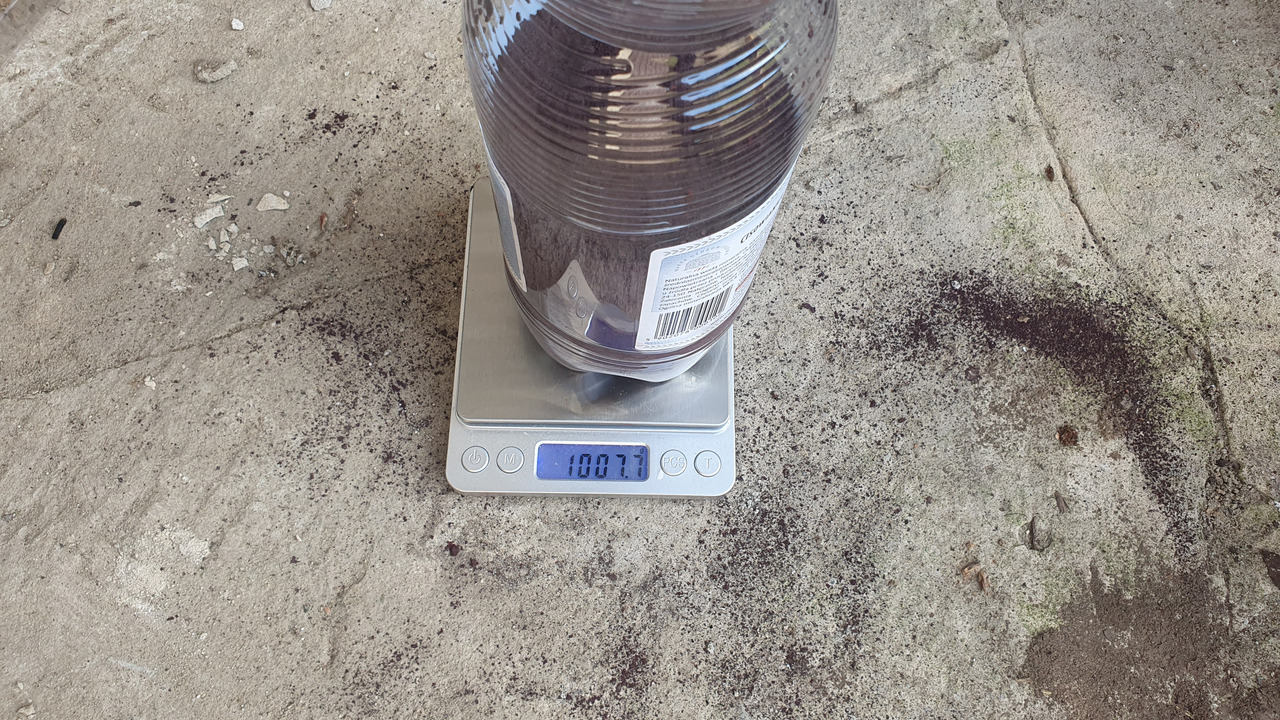
And assuming that all of it is iron II oxide
1007.7 / (55.85 + 16) = 14.025 moles
(827.1 / 55.85) - 14.025 = 0.784 moles lost
Here's comparison to my previous batch that i mostly oxidized (as you can see over time it will consume oxygen from the bottle).
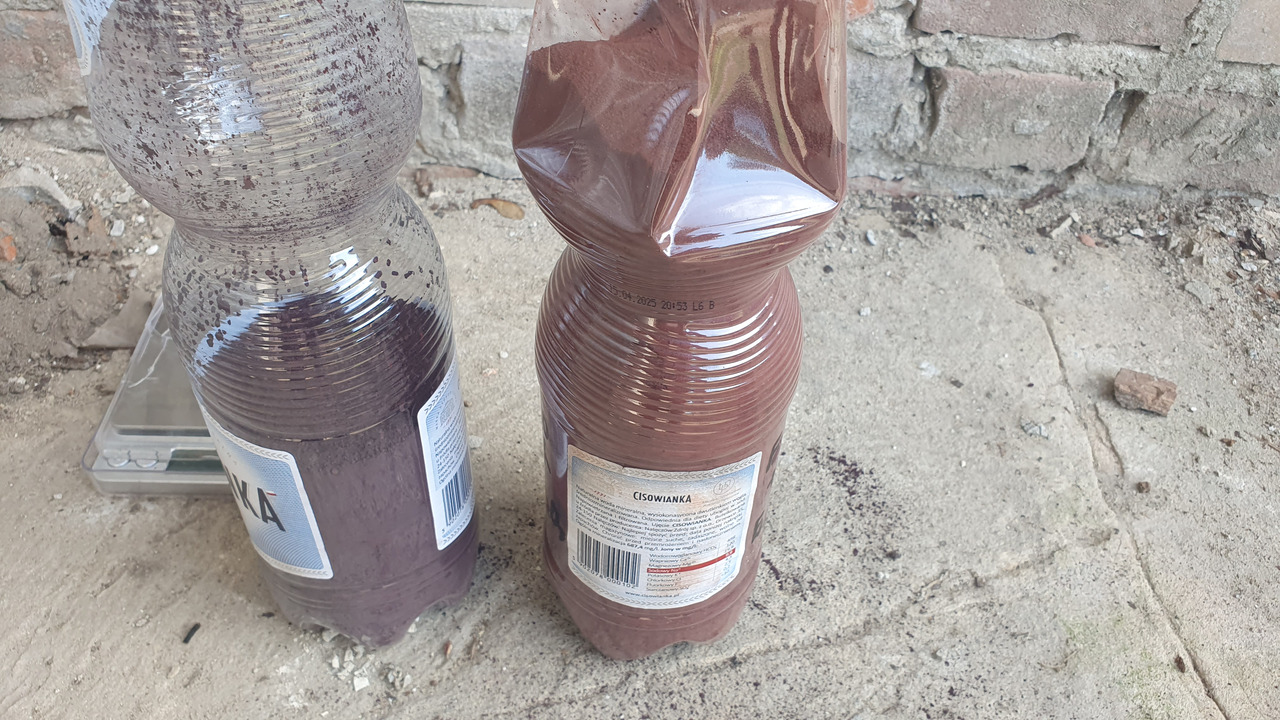
And my pot survived
